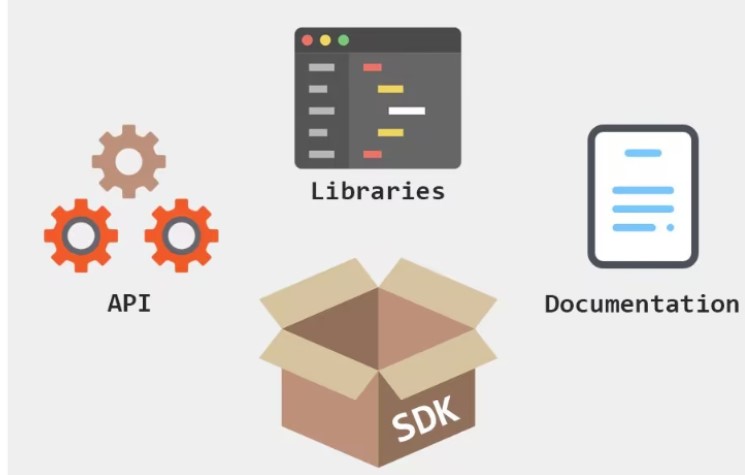Exploring The Difference Between Sdk And Api

In the ever-evolving landscape of software development, the terms SDK (Software Development Kit) and API (Application Programming Interface) are often used interchangeably, leading to confusion among developers and enthusiasts alike. While both SDKs and APIs serve crucial roles in facilitating interactions between different software components, understanding their differences is fundamental for any developer striving to excel in their craft.
What is SDK and API?
API stands for Application Programming Interface. It’s like a messenger between apps, letting them share data and functionality.
An SDK, or Software Development Kit, is a toolbox for programmers. It includes APIs, along with other tools, to build specific features into their applications.
Key Differences between Sdk and API
Understanding the differences between SDKs and APIs is crucial for developers to make informed decisions about the tools and resources they employ in their projects. By leveraging the strengths of both SDKs and APIs, developers can create robust and scalable software solutions that meet the demands of modern-day development. Here are the key differences between SDK and API
Scope and Purpose
APIs focus on defining protocols and methods for communication between different software components. They serve as the contract between the application and the outside world, specifying how software components should interact.
SDKs, on the other hand, provide a more encompassing set of tools and resources tailored to a particular platform or development environment. They aim to simplify the development process by offering ready-made solutions, libraries, and documentation.
Level of Abstraction
APIs operate at a higher level of abstraction, abstracting away the underlying complexity of the system and exposing only the necessary functionalities to developers. They provide a standardized interface for accessing specific features or services.
SDKs offer a more concrete implementation by providing not only the interface but also the tools and libraries required to interact with the underlying system. They often include sample code and documentation to guide developers through the implementation process.
Flexibility and Customization
APIs offer greater flexibility as they allow developers to integrate functionalities into their applications without being constrained by the implementation details of the underlying system. Developers can choose how to utilize the API to suit their needs best.
SDKs provide a more structured approach to development, offering pre-built components and tools that developers can leverage to expedite the development process. While this streamlines development, it may limit customization options compared to using raw APIs.

Learning Curve and Complexity
APIs are generally simpler to learn and use since they focus solely on defining interfaces and protocols. Developers can quickly grasp the functionality provided by an API and incorporate it into their applications.
SDKs, due to their comprehensive nature, may have a steeper learning curve. Developers need to familiarize themselves not only with the API but also with the additional tools and resources provided by the SDK. However, once mastered, SDKs can significantly accelerate development time.
Conclusion
We hope we guided you well on the difference between sdk and api. While SDKs and APIs share the common goal of facilitating software development, they serve distinct purposes and cater to different aspects of the development process. APIs provide a standardized interface for communication between software components. At the same time, SDKs offer a comprehensive set of tools and resources to streamline the development process for a specific platform or framework.






